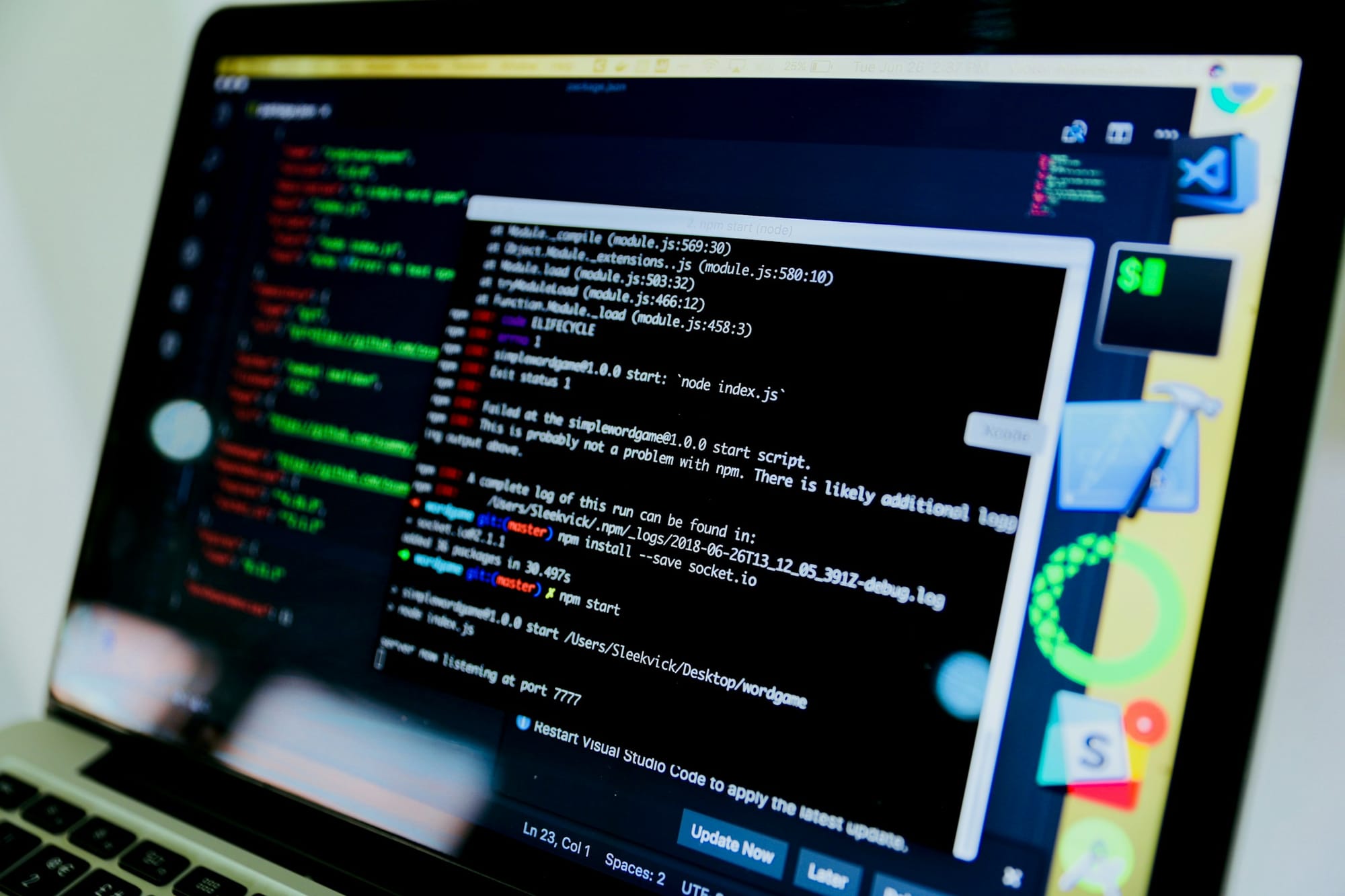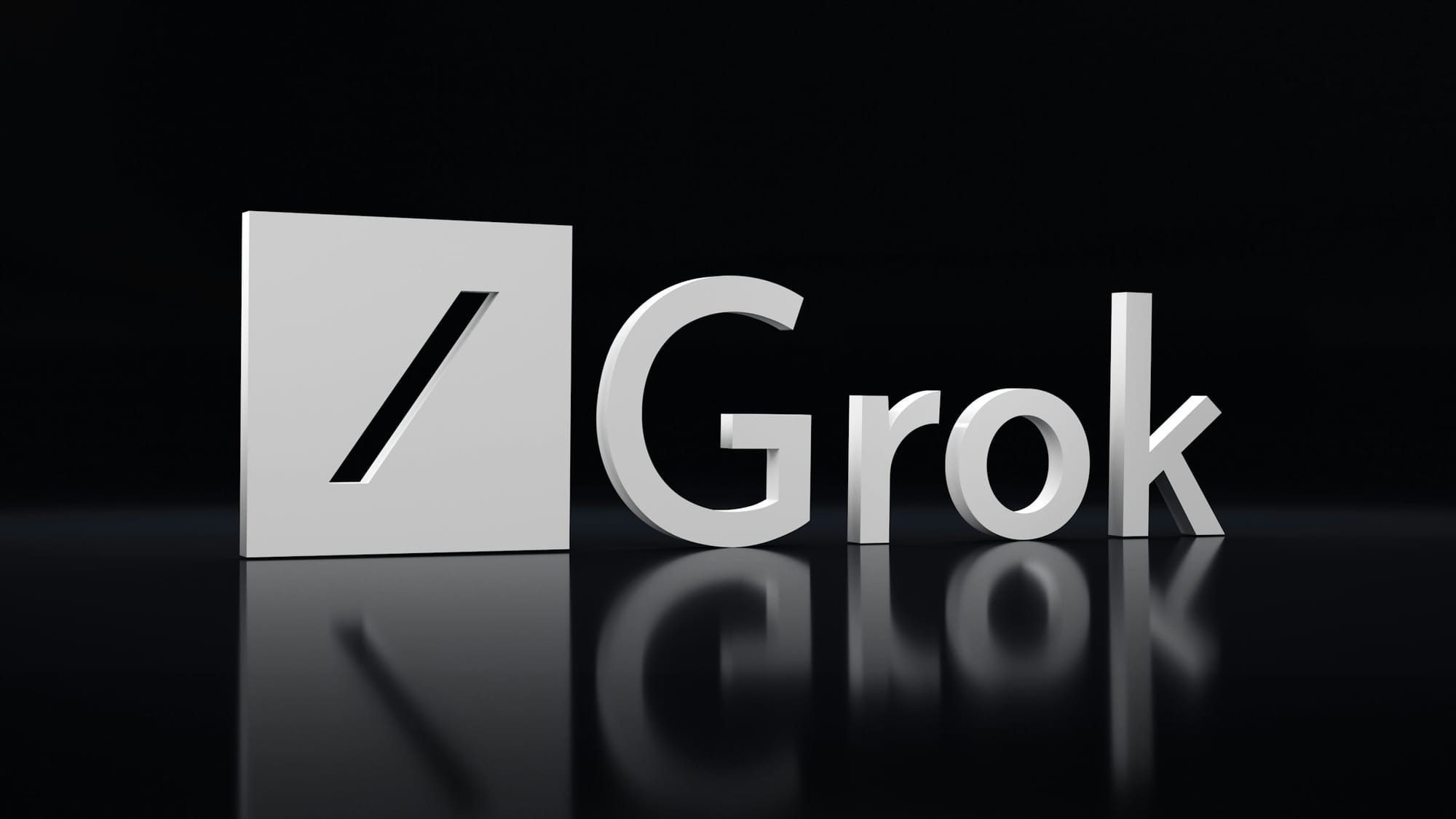Large language models, including multimodal LLM, power many applications we use today. But with so many pre-trained models available, how do you select the right one for your product? LLM model comparison helps you narrow the field by outlining the similarities and differences between the various options. This article will help you uncover the insights you need to make a successful choice, enhancing your product with minimal complexity and cost.
At Lamatic, we want to make your LLM model comparison process as easy as possible. Our generative AI tech stack promises to simplify the integration of LLMs into your products, so you can enhance functionality and innovate faster.
What are LLMs and How They Work

Large language models are advanced technology trained on vast data to understand and create human-like text. They excel at generative AI by producing new content based on provided input. The latest models use a decoder-only transformer-based architecture for their operations, resulting in superior performance. Despite various options like recurrent neural networks, LLMs rely on deep learning techniques to comprehend complex connections in texts and produce writing that accurately captures both meaning (semantic) and syntactic nuances.
Key Technical Features of Large Language Models (LLMs)
LLMs utilize several key technical features that define their development.
Transformer-Based Architectures
LLMs primarily utilize transformer architectures, which are known for their ability to handle sequential data efficiently. These architectures allow LLMs to capture long-range dependencies and context within text, making them highly effective in understanding and generating human language.
Hybrid AI Integration
LLMs often incorporate hybrid AI approaches, combining traditional rule-based systems with advanced deep learning models. This integration enhances the models’ versatility, enabling them to perform a broader range of tasks with improved accuracy. Hybrid AI also allows LLMs to benefit from the strengths of both symbolic and neural approaches, resulting in more robust and adaptable systems.
Adaptive AI Capabilities
One of the standout features of modern LLMs is their adaptive AI capabilities. LLMs can dynamically adjust their responses based on new data and context, allowing them to provide more relevant and accurate outputs. This adaptability is crucial in applications where the environment or user inputs constantly change, ensuring that the LLM remains effective over time.
Responsible AI Practices
LLM development increasingly emphasizes responsible AI practices. This includes building models with mechanisms to minimize biases, ensure fairness, and maintain transparency. Responsible AI also involves implementing ethical guidelines and validation processes to prevent harmful outputs and ensure that LLMs are aligned with societal values and norms.
Extensive Pre-training and Fine-tuning
LLMs undergo extensive pre-training on large-scale datasets, followed by fine-tuning on specific tasks. This two-phase training process enables LLMs to generalize well across different domains and specialize in particular applications. Fine-tuning allows for the customization of LLMs, tailoring them to meet specific industry requirements or user needs.
Tokenization and Embedding Techniques
LLMs utilize advanced tokenization and embedding techniques to process text data. Tokenization breaks down text into smaller units, then transformed into embeddings—numerical representations that encode semantic and contextual information. These techniques are fundamental to how LLMs understand and generate language, ensuring that the models capture the nuances of human communication.
These key technical features make LLMs powerful and flexible tools capable of addressing various natural language processing challenges. Whether it’s through hybrid AI, adaptive AI, or responsible AI practices, LLM development continues to push the boundaries of what AI can achieve in understanding and generating human language.
The Leading Large Language Models in the Market
Several advanced large language models (LLMs) have significantly impacted the field of artificial intelligence (AI), each offering unique capabilities and advancements. Based on their availability and accessibility to the public, LLMs can be classified into open-source and closed-source models. As the name suggests, open-source models have source code that is publicly available and open for use, modification, and distribution.
Closed-source models have source code that is not publicly available and can be accessed only via an API. The code remains protected, modified, and maintained by the developer company and often requires prior permission and license. The choice between open-source and closed-source models often depends on factors such as the need for customization, control over the model, and budget considerations.
Here are some examples of leading open source and closed source models.
Open Source Models
- Llama 2: Meta AI’s model emphasizes safety and helpfulness in dialog tasks, aiming to enhance user trust and engagement.
- Vicuna: Facilitates AI research by providing a platform for easy comparison and evaluation of different LLMs through a question-and-answer format.
- FLAN-UL 2: Utilizing a Mixture-of-Denoisers MoD approach, FLAN-UL2 enhances its performance and delivers high-quality, contextually relevant outputs.
- Grok: xAI’s Grok provides engaging conversational experiences, real-time information access, and unique features like taboo topic handling.
Closed Source Models
- GPT-4: Developed by OpenAI, GPT-4 represents a major leap in conversational AI with its multimodal capabilities and deep comprehension across various domains.
- Gemini: Introduced by Google DeepMind, Gemini is noted for its innovative multimodal approach and versatile model family designed for diverse computational needs.
- Claude 2: Developed by Anthropic, serves as a robust AI assistant, possessing proficiency in coding and reasoning.
- BloombergGPT: Created by Bloomberg, is a new large-scale generative AI model, specifically designed to tackle the complex landscape of the financial industry.
These models are at the forefront of AI innovation, contributing across diverse domains.
How LLMs Work
LLMs, like GPT, use transformer architectures to process creative writing and understand information throughout the text. During training, they improve by predicting the next word based on previous words and assigning scores to text bits. LLMs learn grammar rules and meanings without direct instruction by training on vast data.
They excel at recognizing patterns of different languages and can generate coherent sentences based on input. Techniques enhance their performance and reliability, making them competitive with the best proprietary models, such as:
- Prompt engineering
- Fine-tuning
- Reinforcement learning
Practical Applications and Use Cases of LLMs
LLMs play a great role in content creation, customer support, sentiment analysis, and language translation. They excel in generating customized marketing content and analyzing feedback. LLMs also facilitate seamless communication across languages.
Revolutionizing Content Creation and Natural Language Processing
For content creation, LLMs simplify social media management by automatically creating engaging posts, social media captions, and newsletters based on prompts for different platforms, enhancing online audience engagement.
Enhancing Customer Support with Conversational AI
LLMs have transformed customer support with the help of sophisticated chatbots and virtual assistants. These AI helpers provide tailored assistance, escalate complex issues to human agents, and offer round-the-clock support. With human-like conversations, they excel in tasks like:
- Order processing
- Sharing product information
- Issue resolution in industries like banking, healthcare, and online shopping
Leveraging LLMs enhances customer service by personalizing interactions and improving customer experience.
Breakthroughs in Language Translation and Multilingual Models
LLMs also dominate language translation, accurately preserving original meaning across languages. They handle multiple languages effortlessly, ensuring natural and precise translations that maintain context and cultural nuances. LLMs are essential for effectively translating product descriptions or website content, enhancing global connectivity, and streamlining communication in diverse settings.
Related Reading
- LLM Security Risks
- What is an LLM Agent
- AI in Retail
- LLM Deployment
- How to Run LLM Locally
- How to Use LLM
- AI-Powered Personalization
- How to Train Your Own LLM
A Detailed LLM Model Comparison Guide

Evaluating large language models (LLMs) can take time and effort. One of the best ways to navigate the challenges of LLM comparisons is to break down the evaluation process into easy-to-understand categories.
Developer Team: Why the Maker Matters
The foremost factor in evaluating LLMs is the developer team behind the model. This aspect helps you measure the credibility of the LLM for different use cases. OpenAI developed ChatGPT and is an integral part of Microsoft.
- Google, one of the world's biggest tech companies, has developed Gemini.
- Claude was created by Anthropic, a prominent AI startup committed to developing reliable, customizable, and interpretable AI systems.
- The developer team behind Mistral is Mistral AI, a popular French startup pushing boundaries in generative AI with open-source and commercial LLMs.
- Llama was created by Meta, which leads AI innovation with active initiatives. Meta's involvement in creating an LLM elevates Llama's credibility.
Release Date: Older Models Are More Established
The release date is the next crucial highlight in any LLM comparison point outline. Older LLMs will likely evolve with advanced and innovative features, while new models may offer some creative functionalities.
- ChatGPT is the oldest player, having been introduced in November 2022.
- Meta introduced Llama in February 2023.
- Anthropic launched Claude in March 2023.
- Mistral AI introduced Mistral in September 2023, and Google launched Gemini in December 2023.
Language Model: The Core Feature of an LLM
The core feature of an LLM is the model empowering it. You can find the answer to which LLM is the best by identifying the quality of the language model that powers them. ChatGPT runs on GPT-4 Turbo, while Llama runs on Llama 3. Mistral uses the Mistral 8x22B language model. On the other hand, Gemini and Claude use their eponymous language models.
Price of Output Tokens: Cost-Effectiveness Matters
The next important highlight in any LLM comparison is the price of output tokens. It is an important factor for defining the cost-effectiveness of different large language models or LLMs. The output token price shows how much you would spend to generate tokens from LLMs. You can find a major difference between large language models by determining the cost of generating one million tokens.
- ChatGPT is probably the costliest LLM model, requiring $30 for 1 million tokens.
- The next LLM in terms of pricing is Claude, which needs $24 for 1 million tokens.
- Gemini has an output token price of $21 for 1 million tokens.
- Mistral and Llama are the most cost-effective LLMs, charging $1.20 and $0.95 for 1 million tokens, respectively.
Speed of Language Models: Efficiency Counts
Another notable aspect of comparing large language models and LLMs is their speed. LLMs' speed is one of the foremost determinants of their efficiency in addressing different tasks. An LLM comparison table for enterprise-level applications must focus on speed, as it helps determine whether an LLM can scale up to evolving project requirements.
Speed is only one of the determinants of the quality and performance of LLMs.
- ChatGPT has a transaction speed of 22 tokens per second.
- Google Gemini offers a transaction speed of 44 tokens per second.
- Mistral has a speed of 82 tokens per second.
- Claude has a speed of 153 tokens per second.
- Llama by Meta leads the chart with 866 tokens per second speed.
Quality Index: The Most Crucial Factor
The quality index is the most crucial factor that can help you differentiate between different LLMs. It is an essential highlight for comparisons with top LLMs as the quality index serves a clear impression of the quality of output they generate.
- ChatGPT and Claude score 100
- Google Gemini scores 88
- Mistral scores 83
- Llama by Meta scores 58
Distinctive Feature: What Makes Each LLM Unique
You can find ‘which LLM is the best' by comparing the distinctive features of each LLM. The characteristic feature shows why you should use a large language model for a particular task.
ChatGPT has the distinctive feature of generating real-time responses to user queries in natural language. The key feature of Google Gemini is its ability to understand different types of data, such as:
- Text
- Audio
- Video
- Code
- Images
Claude has a special feature for generating different forms of text content, such as:
- Summaries
- Code
- Creative tasks
Mistral AI is known for its ability to understand the intricacies of:
- Natural language
- Emotions
- Context
Llama stands out as the top choice among LLMs in this comparison for its advanced NLP capabilities, which make managing complex queries easier.
GPT-4: The Multimodal Model with a Global Reach
Generative Pre-trained Transformer 4 (GPT-4) is the latest advancement in the GPT series developed by OpenAI. As the fourth iteration, GPT-4 represents a significant leap forward from its predecessors. This cutting-edge model can process text and handle images alongside text, demonstrating robust performance across various tasks.
Pros
- GPT-4 excels in its multimodal capabilities, meaning it can interpret and generate text and images, offering a more dynamic range of applications.
- Its extensive multilingual support allows it to understand and produce text in numerous languages.
- This broad linguistic capability enhances its usability and makes it accessible to a global audience.
Use Cases
GPT-4's advanced contextual understanding and versatility significantly enhance the quality of interactions. It is adept at managing complex instructions with greater nuance, leading to more reliable and creative outputs.
Whether aiding in coding tasks, excelling in standardized tests like the SAT, LSAT, and the Uniform Bar Exam, or showcasing originality in creative thinking exercises, GPT-4 demonstrates a remarkable ability to handle various domains effectively.
Claude 2: A Safe and Sound Approach to AI Assistants
Developed by Anthropic, Claude 2 represents the latest generation of AI assistants, grounded in Anthropic's research on creating:
- Helpful
- Honest
- Harmless systems
This advanced LLM leverages reinforcement learning from human feedback (RLHF) to refine its output preferences, ensuring that the generated responses align with safety and ethical standards. Claude 2 is accessible through an API and a new public-facing beta website, making it widely available for various applications.
Pros
- Claude 2 excels in several areas, including:
- Advanced reasoning
- Mathematics
- Coding
- It is adept at generating diverse types of:
- Written content
- Summarizing existing materials
- Assisting with research
It utilizes a transformer architecture - a neural network design known for effectively managing sequential information. Claude 2 can understand context and produce appropriate responses based on the input data, making it a powerful tool for handling complex tasks.
Use Cases
Claude 2 is well-suited for processing and analyzing extensive technical documentation or entire books. It can generate code to support developers in their programming tasks and manage large volumes of information for research and data analysis. Its ability to handle and retrieve information efficiently makes it valuable for studies, data analytics, and other information-intensive activities.
Llama 2: A Free and Open-Source Powerhouse
Llama 2, developed from pretraining on publicly available online data sources, has been further refined with Llama Chat. This fine-tuned version benefits from additional instruction datasets and over 1 million human annotations, and it employs reinforcement learning from human feedback to enhance its safety and usefulness.
While Llama 2 is not explicitly optimized for chat or Q&A scenarios, it can be effectively prompted to continue text naturally based on input.
Pros
- Llama 2 is free for research and commercial use, making it accessible for various applications.
- Its enhanced capabilities and efficiency make it valuable for both individual and professional users.
Use Cases
Llama 2 generates diverse types of content, including blog posts, articles, stories, poems, novels, and even scripts for YouTube or social media. Users can prompt Llama 2 to create new, unique text based on its training data by inputting a few words or sentences.
The model is also effective at condensing lengthy texts into concise summaries while preserving critical information, making it a useful tool for digesting large volumes of content. Llama 2 can enhance and expand existing sentences or paragraphs, adding depth and additional content. Its natural language processing capabilities allow it to improve the quality and completeness of written material.
Flan - UL2: The Open-Source Model to Know
FLAN-UL2 is a cutting-edge open-source model now available on Hugging Face, released under the Apache license. It enhances the usability of the original UL2 framework, representing an advancement over its predecessors, FLAN-T5 and traditional UL2 models.
Developed by Google, FLAN-UL2 introduces the Unifying Language Learning Paradigms (ULT) approach, which integrates a diverse range of pre-training objectives through a technique known as Mixture-of-Denoisers (MoD).
This innovative method blends various pre-training paradigms to improve model performance across different datasets and configurations.
Pros
It is completely open source, making it accessible for widespread use and research. It demonstrates exceptional performance on benchmarks such as MMLU and Big-Bench-Hard, positioning it as one of the top models in its category.
Use Cases
FLAN-UL2 is versatile and effective across a wide range of tasks, including language generation, comprehension, and text classification. The model can also be implemented for question answering, commonsense reasoning, structured knowledge grounding, and data retrieval.
Its few-shot learning capabilities also make FLAN-UL2 a promising tool for exploring in-context learning and zero-shot task generalization in research.
Grok: The Upstart LLM from xAI

Grok is an innovative chatbot developed by Elon Musk’s startup, xAI. This versatile conversational AI facilitates serious and light-hearted discussions, catering to diverse users, from researchers to creative professionals. With its engaging and intelligent interactions, Grok goes beyond traditional AI experiences.
The latest release, Grok 1.5V, marks a significant advancement as xAI’s first multimodal model capable of advanced visual processing. It has been recognized for its strong coding and math performance and minimal censorship, allowing it to address controversial topics easily.
Pros
A standout feature of Grok 1.5V is its ability to transform logical diagrams into executable code. This simplifies the programming process and enables users to generate code without deep knowledge of programming languages. Grok 1.5V excels in the RealWorldQA benchmark, which assesses real-world spatial understanding, demonstrating superior capabilities to its peers.
Use Cases
Grok’s ability to convert logical diagrams into code makes programming accessible to individuals with a strong logical foundation. It bypasses the need for in-depth language knowledge and allows users to start building projects immediately. Unlike many AI models that struggle with accurate calculations, Grok 1.5V extracts information from images to perform precise mathematical computations, enhancing its reliability in practical applications.
Grok's depth in understanding images is demonstrated through its ability to interpret simple drawings and generate stories based on inferred elements. This highlights its advanced visual processing and narrative generation capabilities.
Gemini: Google’s Multimodal Model
Gemini is a suite of generative AI models developed by Google DeepMind, designed to excel in multimodal applications. Unlike traditional text-only LLMs, Gemini integrates various types of data, such as images, charts, and videos, to provide a more comprehensive understanding of tasks.
Trained and fine-tuned from the ground up on multimodal datasets, Gemini stands out for its ability to seamlessly combine information from different modalities, offering a cohesive grasp of complex contexts.
Pros
Gemini's advanced capabilities in processing and understanding multiple data types simultaneously set it apart from conventional models. The model demonstrates sophisticated general-purpose language understanding.
It excels at extracting detailed information through nuanced reasoning across various data types.
Use Cases
Developers can fine-tune Gemini with enterprise-specific data and incorporate it into applications. This enables the creation of advanced tools like intelligent search engines and virtual agents that effectively handle a wide array of multimodal tasks.
Gemini’s robust reasoning abilities allow for rapid analysis of extensive documents, facilitating efficient extraction of meaningful insights. This significantly speeds up the process of uncovering valuable information compared to traditional manual methods.
BloombergGPT: The LLM for Finance
BloombergGPT is a specialized large language model (LLM) meticulously trained on extensive financial data to enhance natural language processing (NLP) tasks within the financial sector. Recognizing the financial industry's complexity and unique terminology, BloombergGPT represents a pioneering advancement tailored specifically for this domain.
This model enhances Bloomberg’s existing NLP capabilities, including sentiment analysis, named entity recognition, news classification, and question answering.
Pros
BloombergGPT significantly outperforms other models of similar size on financial NLP tasks while maintaining strong performance on general LLM benchmarks.
Use Cases
BloombergGPT can analyze market trends, historical data, and risk factors to assist in optimizing investment portfolios and maximizing returns. The model can also identify fraudulent activities by analyzing transaction data and spotting irregularities.
BloombergGPT can evaluate market sentiment by analyzing news, social media, and financial reports, providing valuable insights for investment strategies.
Vicuna: The Open-Source LLM for Everyone
Vicuna, developed by a collaborative team from UC Berkeley, CMU, Stanford, and UC San Diego, is an open-source chatbot with 13 billion parameters.
As one of the pioneering open-source large language models, Vicuna is distinguished by its training on human-generated data, which enables it to produce coherent and creative text. It represents an enhancement over the Alpaca model, leveraging the Transformer architecture and being fine-tuned on a dataset of human conversations.
This makes Vicuna an invaluable resource for developing advanced chatbots and for researchers exploring large language models. Its introduction marks a significant advancement in natural language processing, making sophisticated language models more accessible to the public.
Pros
Vicuna generates more detailed and well-structured responses compared to Alpaca, with performance levels comparable to ChatGPT. It features an intuitive interface, allowing users to interact with the model, input prompts, and obtain desired outputs without needing extensive coding knowledge.
Vicuna is designed to integrate smoothly with existing tools and platforms. Whether you're using Python, Java, or another programming language, incorporating Vicuna into your workflow is straightforward.
Use Cases
Vicuna is ideal for crafting blog posts, brainstorming book ideas, or generating creative text. It provides coherent, relevant, and tailored content to meet your needs. It excels at answering queries and retrieving relevant information, making it a valuable tool for obtaining accurate answers and resources.
Vicuna can handle large volumes of data, extracting key insights and summarizing them clearly and concisely, helping to manage data overload efficiently.
Related Reading
- How to Fine Tune LLM
- How to Build Your Own LLM
- LLM Function Calling
- LLM Prompting
- What LLM Does Copilot Use
- LLM Evaluation Metrics
- LLM Use Cases
- LLM Sentiment Analysis
- LLM Evaluation Framework
- LLM Benchmarks
- Best LLM for Coding
How to Choose the Right Large Language Model for Your Use Case?

Define Your Use Case and Requirements
Before selecting a language model, you must understand your specific use case and its requirements. Are you building a conversational AI system, a text summarization tool, or a sentiment analysis application? Each use case has unique demands, such as:
- Open-ended generation
- Concise summarization
- Precise sentiment classification
Consider factors like the desired level of performance, the required inference speed, and the computational resources available for training and deployment. Some LLMs excel in specific areas but may be resource-intensive, while others balance performance and efficiency.
Understand LLM Pre-Training Objectives
LLMs are pre-trained on vast datasets using different objectives, significantly influencing their capabilities and performance characteristics. The three main pre-training objectives are:
- Autoregressive Language Modeling: Models are trained to predict the next token in a sequence, making them well-suited for open-ended text generation tasks such as creative writing, conversational AI, and question-answering.
- Auto-encoding: Models are trained to reconstruct masked tokens based on their context, excelling in natural language understanding tasks like:
- Text classification
- Named entity recognition
- Relation extraction.
- Sequence-to-Sequence Transduction: Models are trained to transform input sequences into output sequences, making them suitable for tasks like:
- Machine translation
- Summarization
- Data-to-text generation
Align your use case with the appropriate pre-training objective to narrow your LLM options.
Evaluate Model Performance and Benchmarks
Once you have identified a shortlist of LLMs based on their pre-training objectives, evaluate their performance on relevant benchmarks and datasets. Many LLM papers report results on standard NLP benchmarks like GLUE, SuperGLUE, and BIG-bench, which can provide a good starting point for comparison.
Real-World Testing: The Ultimate Benchmark
Remember that these benchmarks may not fully represent your specific use case or domain. Test the shortlisted LLMs on a representative subset of your own data to better assess their real-world performance.
Consider Model Size and Computational Requirements
LLMs come in different sizes, ranging from millions to billions of parameters. While larger models generally perform better, they also require significantly more computational resources for training and inference.
Evaluate the trade-off between model size and computational requirements based on your available resources and infrastructure. If you have limited resources, consider smaller or distilled models, which can still provide decent performance while being more computationally efficient.
Explore Fine-Tuning and Deployment Options
Most LLMs are pre-trained on broad datasets and require fine-tuning on task-specific data to achieve optimal performance. Fine-tuning can be done through traditional transfer learning techniques or through few-shot or zero-shot learning, where the model is prompted with task descriptions and a few examples during inference.
Balancing Performance and Convenience
Consider the trade-offs between these approaches. Fine-tuning typically yields better performance but requires more effort and resources, while few-shot or zero-shot learning is more convenient but may sacrifice accuracy. Evaluate the deployment options for the LLM.
Deployment Strategies
Some models are available through cloud APIs, which can be convenient for rapid prototyping but may introduce dependencies and ongoing costs. Self-hosting the LLM can provide more control and flexibility but requires more engineering effort and infrastructure.
Stay Up-to-Date with the Latest Developments
The LLM landscape rapidly evolves, and new models and techniques are frequently introduced. Regularly monitor academic publications, industry blogs, and developer communities to stay informed about the latest developments and potential performance improvements.
Establish a process for periodically re-evaluating your LLM choice, as a newer model or technique may better align with your evolving use case requirements.
Start Building GenAI Apps for Free Today with Our Managed Generative AI Tech Stack
Lamatic offers a managed Generative AI tech stack that includes:
- Managed GenAI Middleware
- Custom GenAI API (GraphQL)
- Low-Code Agent Builder
- Automated GenAI Workflow (CI/CD)
- GenOps (DevOps for GenAI)
- Edge Deployment via Cloudflare Workers
- Integrated Vector Database (Weaviate)
Lamatic empowers teams to rapidly implement GenAI solutions without accruing tech debt. Our platform automates workflows and ensures production-grade deployment on the edge, enabling fast, efficient GenAI integration for products needing swift AI capabilities.
Start building GenAI apps for free today with our managed generative AI tech stack.
What Are the Benefits of Lamatic?
Lamatic includes several features that make it easier for companies to adopt generative AI technologies. First, Lamatic's managed middleware solution allows developers to focus on building custom applications without worrying about the underlying infrastructure. Its automated workflows help teams get their applications up and running quickly.
Lamatic's GenOps tools ensure that generative AI applications can be deployed and maintained in production environments. Finally, applications built on Lamatic's tech stack can be deployed on edge devices using Cloudflare workers for fast performance.





